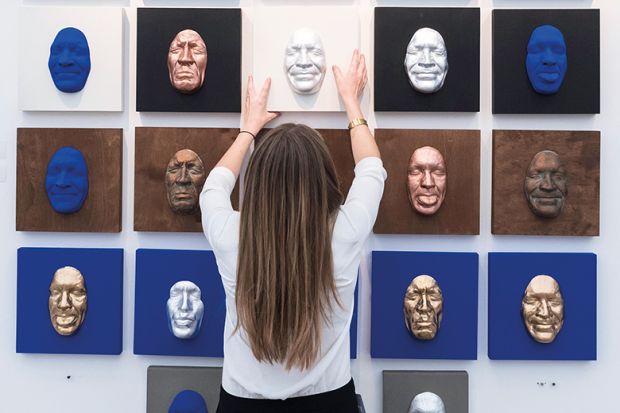People from ethnic minorities were featured in just a third of lecture slides analysed as part of a new study, with only 12 per cent of the images presenting them in “positive, non-stereotyped and active roles”.
Academics at the University of Kent took 250 images from slides used as part of first-year social science modules and identified 340 “actors” featured in photos. Most of the images (87 per cent) contained white people, who were featured exclusively 67 per cent of the time, while a third depicted people of colour, 12 per cent of them exclusively, according to the study, published in Teaching in Higher Education.
This was despite 27 per cent of UK undergraduates coming from black, Asian or minority ethnic backgrounds in 2019-20. On the modules from which the slides were taken, 35 to 40 per cent of the students were from ethnic minorities, the study says.
“We are living in a visual society. Our current students have been raised on Instagram, Snapchat and TikTok. If ‘a picture is worth a thousand words’, we need to pay more attention to the use of and impacts of pictures in teaching and learning,” said one of the authors, Kathleen Quinlan, professor of higher education at Kent.
“Recent research in psychology shows that pictures move people more than words. So it was a priority to investigate diversity and inclusion in the visual imagery in lecture slides. We hoped the study would raise awareness of this important, but overlooked, aspect of curricular diversity and sensitivity.”
Working with postdoc Mi Young Ahn, now a lecturer at Goldsmiths, University of London, and Barbara Adewumi, from the student success team at Kent, Professor Quinlan coded the images by themes such as “power” – where the person shown was identified as a business leader or person with authority. A total of 24 per cent of the people of colour were put in this category, compared with 46 per cent of the white actors.
The images were also classified by whether they were “inspiring”, judged by when the people of colour were shown in positive or active roles, as opposed to being “absent, under-represented, or presented stereotypically or problematically”, the study says. Thirty-one (12 per cent) of the images were interpreted as “inspiring”, compared with 204 as “uninspiring”.
Professor Quinlan said the findings mirrored similar studies that looked at under-representation of authors of colour on reading lists.
She said focus groups at Kent had identified that minority students related to content better “when they could see themselves in it” and called on lecturers to review their own slides in light of the findings to “consider who is represented in the pictures they include and what roles they are playing”.
“They can seek out images that represent people of colour as professionals, scholars and leaders,” Professor Quinlan said, adding that rather than just using well-known faces such as black celebrities, lecturers should “include anonymous people of colour in everyday and professional roles to normalise the presence of black and Asian people in the kinds of professional roles to which students might aspire”.
Register to continue
Why register?
- Registration is free and only takes a moment
- Once registered, you can read 3 articles a month
- Sign up for our newsletter
Subscribe
Or subscribe for unlimited access to:
- Unlimited access to news, views, insights & reviews
- Digital editions
- Digital access to THE’s university and college rankings analysis
Already registered or a current subscriber? Login








